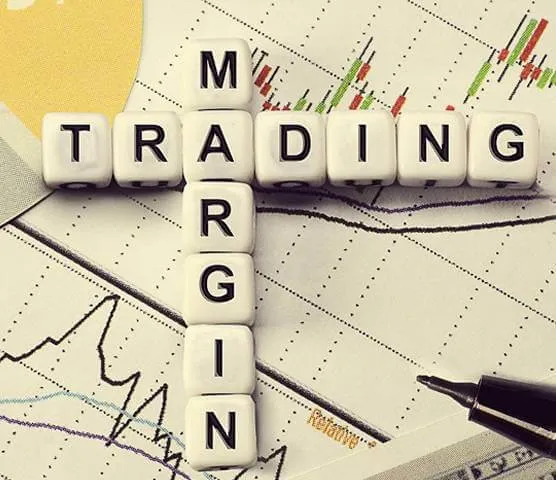
What Is Cryptocurrency Trading and How Does it Work?
Cryptocurrency trading involves using fundamentals, technical analysis or both to speculate on the price movement of a cryptocurrency coin or token. This can be done by utilizing a CFD trading account or via an exchange.


Trading Cryptocurrency on an Exchange
When you use an exchange to trade different cryptocurrencies, you'll have to open an account and provide them with the information they require. You may be able to buy specific coins and tokens from the exchange or supply them from your portfolio. The coins or tokens you'd like to trade will be stored by the exchange in a wallet that's accessible when you want to trade them.
Each exchange is different in how they operate. On some exchanges, you can trade pairs, which means you'll be able to exchange BTC for an altcoin like ETC and vice versa. On other exchanges, you may only be able to exchange fiat US dollars for the token or coin you'd like. Exchanges usually have limits on how much you can withdraw without providing documents associated with your identity.
CFD Trading and Cryptocurrency
CFD trading involves derivatives. This allows you to speculate on price movement without having to own the coin or token you want to trade. You can buy this trading vehicle when you want to speculate on a rise in the underlying cryptocurrency or short it when you think the price movement is going to go down.

How Does the Cryptocurrency Market Work?
Cryptocurrency operates in a decentralized market. The coins that are created are usually given as rewards to individuals who are mining cryptocurrency. Unlike the stock market where shares are distributed by a company, there is no issuance or backing by a central authority. However, once a cryptocurrency has been created, it can be stored in a wallet and bought and sold on an exchange.
Cryptocurrencies are only found in digital form on a blockchain. The blockchain provides a digital record of transactions, which can be shared throughout the network. When you buy cryptocurrency or mine it and place it in a wallet, you have access to private keys that give you ownership. When you send cryptocurrency to another wallet address, you are sending them the private keys. This is why it's usually recommended to only use an exchange for trading and not for storing your cryptocurrency as the private keys are not in your possession when they are being stored in an exchange wallet.
Blockchain Technology
Blockchain technology allows information to pass from one point to another safely and automatically. The first party sending the information creates a block, which is then verified by several other users of the blockchain distributed on the network. After verifying the block, it is stored on the chain, which creates a unique record and history of this transaction. This makes it impossible to falsify this single record. The technology is used for cryptocurrency to send transactions.
Creates a Network Consensus
The beauty of a blockchain file is its storage on several nodes across its network. It is easily accessible and readable by every user of the network. This helps ensures security, creates transparency and makes it extremely difficult to modify these digital files.
Secured by Cryptography
The files in a blockchain are protected by cryptography, which is a technique used to secure communications and keep it out of the hands of unauthorized users.
Cryptocurrency Mining
Cryptocurrency mining involves using mining software and hardware equipment, which is used to check and verify cryptocurrency transactions recently added to a blockchain.
How Transactions Are Verified
Transactions on a blockchain need to be verified. This is done by utilizing a combination of mining software and mining rigs that have multiple GPUs, ASIC miners or FPGA mining equipment. These units check pending transactions to verify that there's an appropriate amount of funds available to complete a transaction. This is done by checking past transaction history, which is provided on the blockchain. Often, several verifications must be done to move a transaction from a pending status to completed.
Creating New Blocks
After transactions have been verified, they are compiled into a new block. This is stored on the chain and secured cryptographically. When another miner needs to verify the block, it will have to discover a solution to an algorithm that can unlock the cryptographic barrier. This takes electricity to accomplish. Compensation is given to the miner that solves the cryptographic puzzle in the form of a block reward for their effort. This reward includes several coins of the underlying cryptocurrency.

How Cryptocurrency Trading Works
If you decide to trade cryptocurrencies by utilizing a CFD account, you are speculating on the rise or fall of the current price of the cryptocurrency being represented. It's important to know, you don't own the cryptocurrency. You're just trading an investment vehicle that represents it.
A CFD is a derivative product, which can be leveraged. This means you're able to trade a position in a specific cryptocurrency with a lot less money than it would cost to own the amount you want to trade. While this can escalate your profits quickly, it can also create steep losses fast.
Cryptocurrency Trading Spreads
The difference between the buy and sell price of a cryptocurrency CFD is known as the spread. Similar to several other financial markets such as stocks and Forex, you'll be presented with two prices when you're trading. When you want to take a long position, you'll need to purchase the asset at the buy price, which is set just above the current market price. When you want to trade a short position, you'll use the selling price, which is set just below the market price.
Cryptocurrency Trading and Using Leverage
When you use leverage to trade cryptocurrencies, you are required to fund the full value of your trade. Utilizing a smaller deposit allows you to take advantage of a larger sized trade, which is known as using margin. Your exposure to this type of leverage position means you can create profits or losses that are based on the full value of a trade.
It's important to understand how to manage risk when you're utilizing leveraged trading. Losses can build quickly if a trading plan isn't put into place.
Cryptocurrency Market Volatility
Like most markets, the cryptocurrency market fluctuates due to demand and supply. Here are some of the main factors that may impact prices and volatility:
Market capitalization: Larger cap cryptocurrencies may receive more attention from buyers and sellers, which can create bigger fluctuations in price
Major events: Key events like security breaches or a regulatory update can create major price fluctuations
Supply: The current float or total number of existing coins that are available to trade will affect price action
Media: Coverage of a cryptocurrency in the media can change how it's portrayed, whether it's good or bad
Integration: How well the underlying cryptocurrency integrates into infrastructure

Cryptocurrency Trading and Using Margin
Leveraged trading utilizes margin. The margin you use to place a trade is expressed as a percentage of the total value of your position. When you're using margin to trade cryptocurrencies, you'll have a fluctuating margin requirement, which changes based on the size of your trade.
For example, if you want to trade a $10000 position with a CFD representing Bitcoin (BTC), your margin requirement may allow using $1500 to open the full position.
Cryptocurrency Trading and PIP
A pip is a unit used in CFD trading to represent the movement in price. Each pip is equivalent to one digit in movement. For example, if a cryptocurrency is being traded at a price level that is currently at $210 and it moves to $211, this movement in price would be equal to one pip. Some cryptocurrencies trade at different scales, which means a single pip might represent price movement equivalent to one penny.
It can be helpful to read and understand all of the details associated with the trading platform you choose. This will assist in making sure you have the knowledge and an understanding of how price movements work for the cryptocurrency you are trading.



